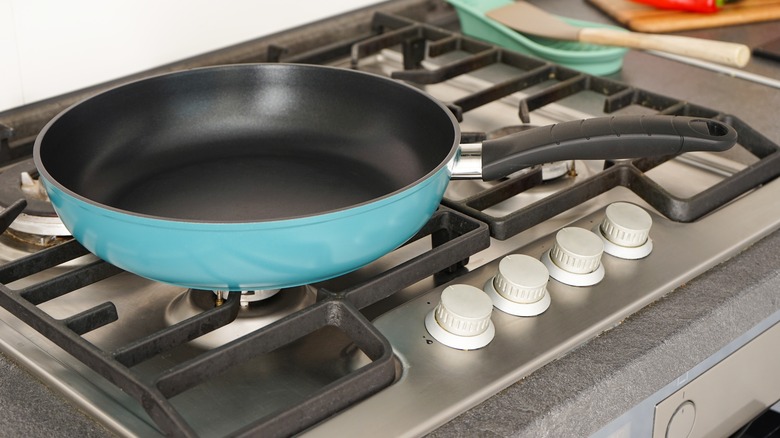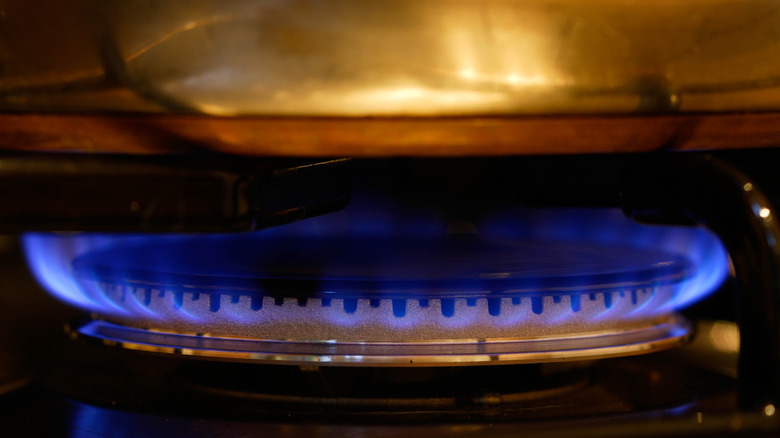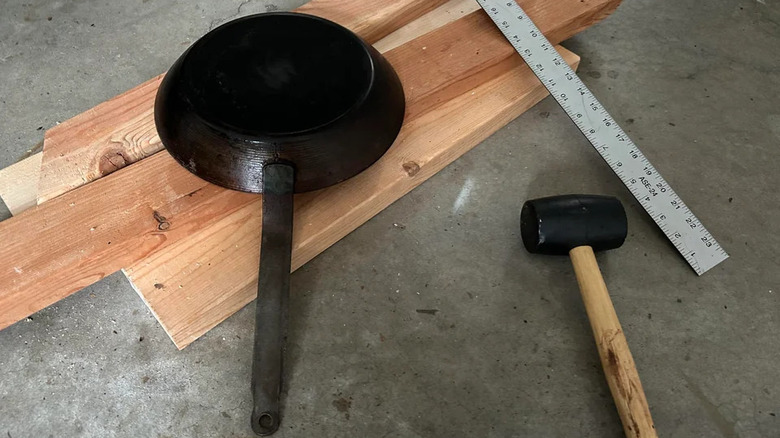Small Burners May Be The Culprit For Your Warped Frying Pans
Picture this: You're about to grab your trusty frying pan to whip up a tasty pan-seared steak. However, you notice something unusual — the pan seems to have curled up more on one side than the other. Your eyes aren't playing tricks on you, a warped pan is a real and frustratingly common issue.
Warping or curling happens when the metal in the pan doesn't expand properly as it heats up. There are a few reasons this mistake could occur. It might be because the pan got too hot or because the material of the pan wasn't strong enough to handle repeated heating. But here's the twist: Sometimes, it's not the pan's fault at all. It could be that your burner is a bit too small for your pan!
When your burner is too small for your pan, heat doesn't spread evenly across the pan's bottom and instead, it just concentrates in the center. As metal expands when heated, the center expands faster than the cooler outer edges. According to a research paper published in the journal Applied Thermal Engineering, this imbalance eventually causes the metal to buckle, making the pan warp.
Ensuring proper heat distribution is key
A handy visual trick to check if your cookware fits well on the burner is to see how it sits on the burner's grate. Ideally, the pan shouldn't stick out more than an inch beyond the burner or grate. Also, when you turn on the burner, the flame should match the bottom of the pan, reaching to the edge of its base — no more, no less. If the flame stays mainly in the center and doesn't reach the outer edges, your cookware might be too large for the burner. Conversely, if the flame extends beyond the sides of the pan, your burner may be too big, or the heat setting might be too high, potentially causing the pan to warp from overheating. If getting larger burners is not an option, consider downsizing your cookware. Even though you'll have less cooking space, your pans will be safe from warping then.
It's possible to patch up a warped pan!
Dealing with gunk, stains, and rust on a pan is usually manageable, but when it becomes warped, it can seem like it's reached the end of its cooking days. Fortunately, there's still hope to salvage it if the warping isn't too severe. (While the method below works well for most pans, don't try it on cast iron pans – the metal could shatter under the pressure of a hammer.)
Start by gently heating up your warped pan on low heat for about five minutes on a stove that's sized appropriately for it. Then, find a sturdy surface like a workbench or a concrete floor and place an old towel underneath the pan to protect it. Cover the pan with another towel to protect any non-stick coating. Using a hammer — preferably a dead-blow hammer to minimize damage to the metal surface — gently tap the pan to coax it back into shape.
For more severe cases, follow the same steps as above but also place something tough, like an old wooden block, on the pan's surface before hammering. The extra support should help bring the pan back into shape more effectively.


